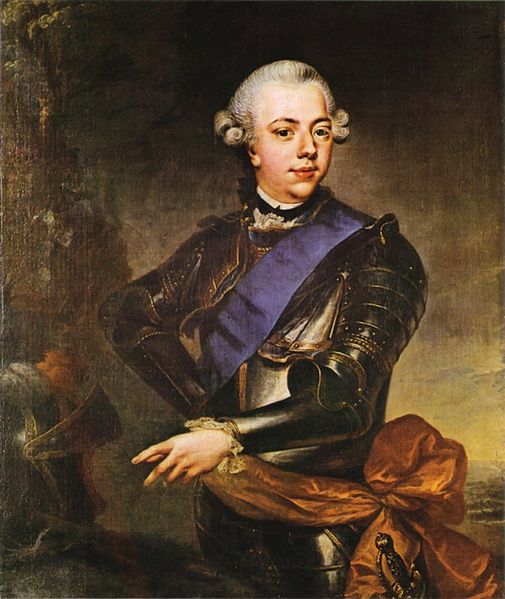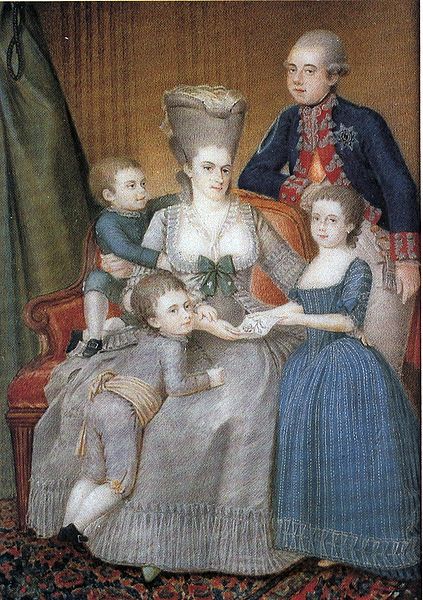<Back to Index>
- Surgeon Karl Ferdinand von Gräfe, 1787
- Composer Franco Alfano, 1875
- Stadtholder of the Dutch Republic William V Batavus, Prince of Orange-Nassau, 1748
PAGE SPONSOR


William V Batavus, Prince of Orange - Nassau was the last Stadtholder of the Dutch Republic, and between 1795 and 1806 he led the Government of the Dutch Republic in Exile in London. He was succeeded by his son William I.
He was born in 1748, the only son of William IV, who had the year before been restored as stadtholder of the United Provinces. He was only 3 years old when his father died in 1751, and a long regency began. His regents were: Anne, his mother, from 1751 to her death in 1759; Marie Louise, his grandmother, from 1759 to her death in 1765; Ludwig Ernst von Brunswick - Lüneburg - Bevern, from 1759 to 1766, and kept on as a privy counsellor until October 1784; Carolina, his sister (who at the time was an adult aged 22, while he was still a minor at 17), from 1765 to William's majority in 1766.
William was made the 568th Knight of the Order of the Garter in 1752. William V assumed the position of stadtholder (chief executive) and Captain - General of the Dutch States Army in 1766. On 4 October 1767 in Berlin, Prince William married Princess Wilhelmina of Prussia, the daughter of Augustus William of Prussia, niece of Frederick the Great and a cousin of George III. The position of the Dutch during the American War of Independence was one of neutrality.
William V, leading the pro-British faction within the government,
blocked attempts by pro-independence, and later pro-French, elements to
drag the government to war. However, things came to a head with the
Dutch attempt to join the Russian led League of Armed Neutrality, leading to the outbreak of the Fourth Anglo - Dutch War in
1780. In spite of the fact that Britain was in the midst of fighting
several other countries, the ensuing war proved difficult for the Dutch
to cope with and the Republic was eventually forced to cede some
territory to the British. The United Provinces recognized the United
States in February 1782, after much political debate and pressure from
American and French diplomats. Joan van der Capellen tot den Pol and Court Lambertus van Beyma took the initiative. After the signing of the Treaty of Paris (1783), the impoverished nation grew restless under William's rule. In the meantime, a band of young revolutionaries, called Patriots, was challenging his authority more and more. In 1785 William left the Hague and removed his court to Guelders, a province remote from the political centre. In September 1786 he had to send an army to stop Herman Willem Daendels, organizing an overthrow at the cities' vroedschap. In June 1787 his energetic wife Wilhelmina tried to travel to the Hague. Outside Schoonhoven, she was stopped by militia, taken to a farm near Goejanverwellesluis and within two days made to return to Nijmegen. To Wilhelmina and her brother, Frederick William II of Prussia, this was an insult. Frederick sent in an army to attack the dissidents. Many patriots fled to the North of France, around Saint-Omer, in an area where Dutch was spoken. Until his overthrow they were supported by King Louis XVI of France. The year 1795 was a disastrous one for the ancien régime of
the Netherlands. Supported by the French Army, the revolutionaries
returned from Paris to fight in the Netherlands, and in 1795 William V
fled to the safety of England. A few days later the Fall of Amsterdam occurred, and the Dutch Republic was abolished by the victorious French. The last of the Dutch stadtholders, he died in exile at Brunswick, now in Germany. His body was moved to the Dutch Royal Family crypt in the Nieuwe Kerk in Delft on 29 April 1958. In 1813, his son, King William I returned to the Netherlands and became the first Dutch monarch from the House of Orange. (Note that he was not the first King of Holland; that was Louis Bonaparte (1778 – 1846), who had reigned from 1806 to 1810.) William V and Wilhelmina of Prussia were parents to five children.